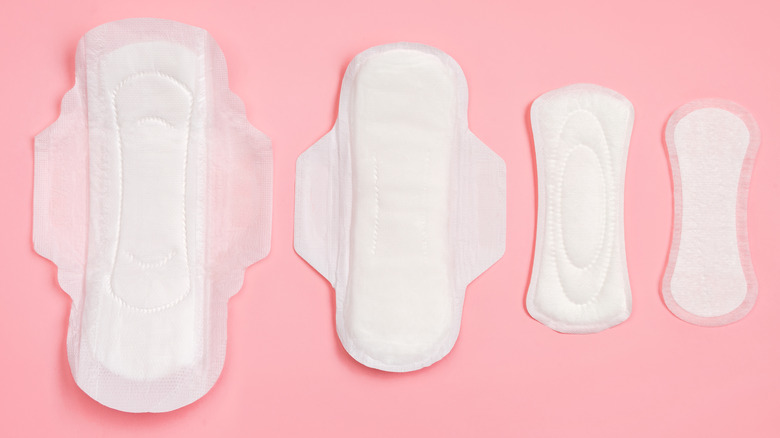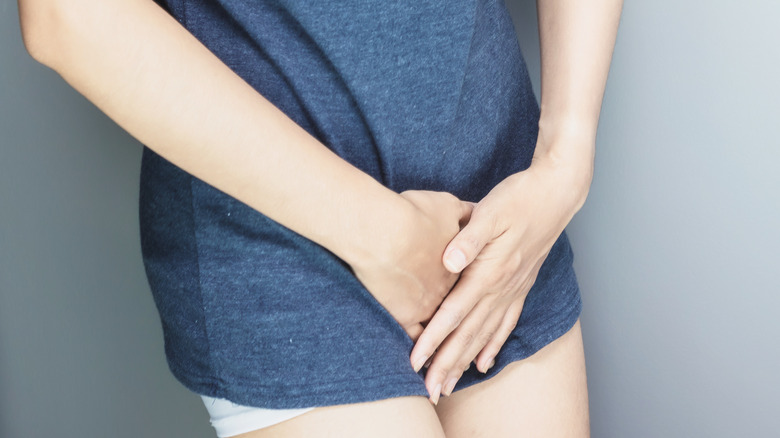What Happens If You Wear A Pad For Too Long?
Designed to absorb fluid discharge during menstruation, sanitary pads take on both moisture and heat as they're worn, reports Medical News Today. Although used as an effective safeguard against leaks, there comes a point when pads begin to lose their effectiveness and can potentially put one at risk for infection. So exactly how long is too long to wear a sanitary pad?
Well, answers will vary based on flow, weather, sweating during physical activity, and more (via Healthline). However, The American College of Obstetricians and Gynecologists suggests swapping out your old pad for a new one roughly every four to eight hours. Wearing a pad for an extended period of time can lead to leaks, odor, and general discomfort as it twists and moves within one's underwear throughout the day (per Healthline). Keeping tabs on your pad during bathroom trips is one way to track whether or not it may be time for a switch. Additionally, take note of when your pad begins to feel wet. No matter how much time has passed since your last change, it's best to go ahead and grab a new one. The goal is to catch your pad before it gets full, as leaving it on for too long can increase the chances of leaks, infection, or pad rash.
What is pad rash?
The accumulation of moisture within a sanitary pad can enable the growth of bacteria or fungus, explains Medical News Today. As a result, going too long between pad changes can cause swelling, itching, abnormal discharge, and possible infection, including yeast infections, bacterial vaginosis, or lower reproductive tract infections. Furthermore, you may notice the development of what's known as pad rash. This skin reaction can occur due to continuous rubbing of the pad against the body or may stem from an allergy to certain chemicals used in the making of the pad. For example, Greatist notes that a pad's sticky adhesive strips or fragrance additives, in particular, can aggravate sensitive skin on the vulva, thighs, or buttocks.
Frequently changing your pad can help protect against uncomfortable leaks, infection, and rash. For adolescents, healthcare providers note that this can sometimes be difficult to achieve during a busy school day (per TeensHealth). Therefore, experts suggest consulting with a nurse, or teacher, or changing your pad during longer breaks in the school day, such as during a lunch period or while changing into gym clothes.


